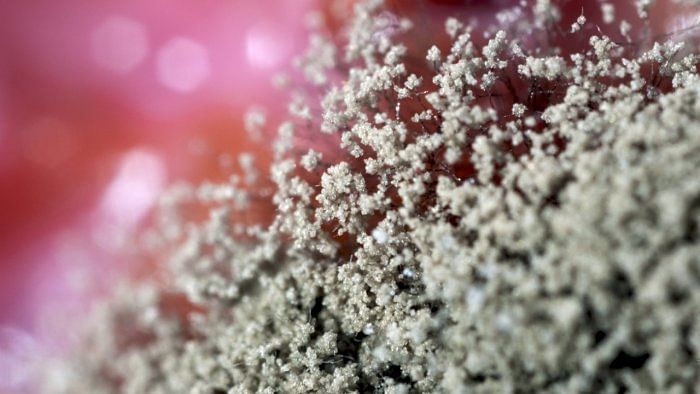
There has been a significant rise in fungal infections in Covid-19 patients. Mucormycosis is a serious infection caused by a group of molds called mucormycetes. It most commonly affects the sinuses and lungs. This fungus usually resides in the nasal mucosa and then germinates to spreads from the nose into the eyes and brain in diabetic and immune-compromised patients.
Rhinocerebral Mucormycosis is an infection in the sinuses that can spread to the brain. It is common in people with uncontrolled diabetes and in people who have had renal transplant. These fungal spores have seen the environment and on inhalation, in people with the weaker immune system, cause infection in the sinuses, lungs and in the eyes leading to loss of vision
Transmission generally occurs through inhalation, inoculation or ingestion of the spores. It can spread through bandages, linen, water leaks, poor air filtration, non-sterile instruments and open wounds.
In recent times, there has been a significant rise in the cases of Mucormycosis in Covid-19 and post-Covid-19 patients. The probable causes would be increased usage of steroids in the treatment, inadequate monitoring of blood sugar level, altered innate immunity, immune dysregulation, invasion of the vessels and formation of clots.
Given a large number of Covid-19 cases across the country, Mucormycosis is something to be taken seriously and be aware of – both for patients and caregivers.
Common symptoms in initial stages:
Sinus headache
Facial pain
Stuffy nose
Blood nasal discharge
Blurring of vision, double vision
Dental pain or loosening of teeth, in the initial stages.
Common symptoms in later stages:
Facial swelling
Facial skin colouration
Ptosis (closure of eyelids)
Proptosis (swelling of the eyeballs)
Restricted eye movements
Palatal blackish discolouration
Brownish discharge from the nose
Recognising the symptoms early is the surest way to diagnose and treat the disease.
Investigations needed
These are the investigations to be conducted:
Complete blood count
Blood sugar test
Renal function test
Deep nasal swab - KOH staining to detect the fungus
Nasal endoscopy and biopsy,
MRI of the brain
CT scan of the nose and PNS helps in further assessment of the disease.
Medical treatment would involve control of blood sugar, anti-fungal medications – injection of liposomal amphotericin B and surgical debridement.
Prevention of Mucormycosis in high-risk Covid-19 patients would include:
Avoid areas with a lot of dust for patients. The fungus spores exist in dust and old construction material.
Ensure the patient always wears a good mask.
Take extreme contact and droplet precautions, and maintain strict hand hygiene. Spores spread through droplets from coughs and can infect anybody with low immunity.
Ensure strict control of blood sugar. Covid-19 and steroid used as treatment push up the sugar level in the body. This elevated sugar level is food for the fungus to grow.
Do not use steroids for home isolation patients. Especially when you cannot monitor blood sugar levels.
Maintain nasal hygiene of patients with saline washes daily. This clears out dust particles and fungus spores.
Maintain hygiene constantly of the equipment used for oxygenation - nasal prongs, nasal canula, masks for ventilation. Equipment not used for long will have dust particles along with fungus spores.
Linen can carry fungus spores too and therefore should we cleaned thoroughly daily.
Watch for early symptoms and report to an ENT surgeon
If symptoms are ignored in the early stages or diagnosed, the consequences can be very serious. In advanced stages the fungus can affect the sinus bones leading to their removal, if it enters the eye the eyeball will have to be removed, and further, if it affects the brain, it will be fatal.
(The writer is an ENT surgeon)